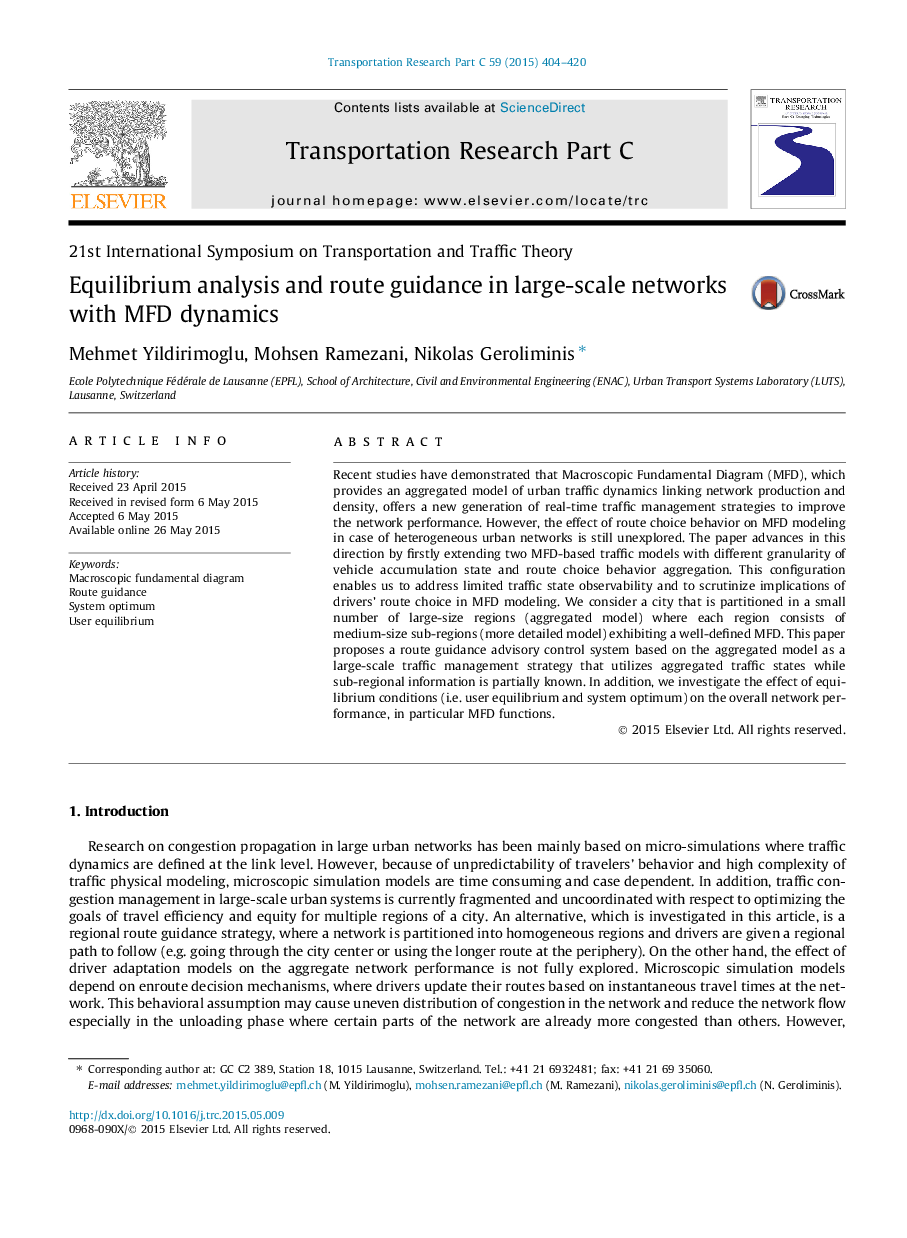| Article ID | Journal | Published Year | Pages | File Type |
|---|---|---|---|---|
| 524878 | Transportation Research Part C: Emerging Technologies | 2015 | 17 Pages |
•Developing two MFD-based traffic models with different aggregation levels.•Integrating user equilibrium and system optimum flows in the network MFD analysis.•Developing a route guidance control system based on parsimonious MFD model.
Recent studies have demonstrated that Macroscopic Fundamental Diagram (MFD), which provides an aggregated model of urban traffic dynamics linking network production and density, offers a new generation of real-time traffic management strategies to improve the network performance. However, the effect of route choice behavior on MFD modeling in case of heterogeneous urban networks is still unexplored. The paper advances in this direction by firstly extending two MFD-based traffic models with different granularity of vehicle accumulation state and route choice behavior aggregation. This configuration enables us to address limited traffic state observability and to scrutinize implications of drivers’ route choice in MFD modeling. We consider a city that is partitioned in a small number of large-size regions (aggregated model) where each region consists of medium-size sub-regions (more detailed model) exhibiting a well-defined MFD. This paper proposes a route guidance advisory control system based on the aggregated model as a large-scale traffic management strategy that utilizes aggregated traffic states while sub-regional information is partially known. In addition, we investigate the effect of equilibrium conditions (i.e. user equilibrium and system optimum) on the overall network performance, in particular MFD functions.
